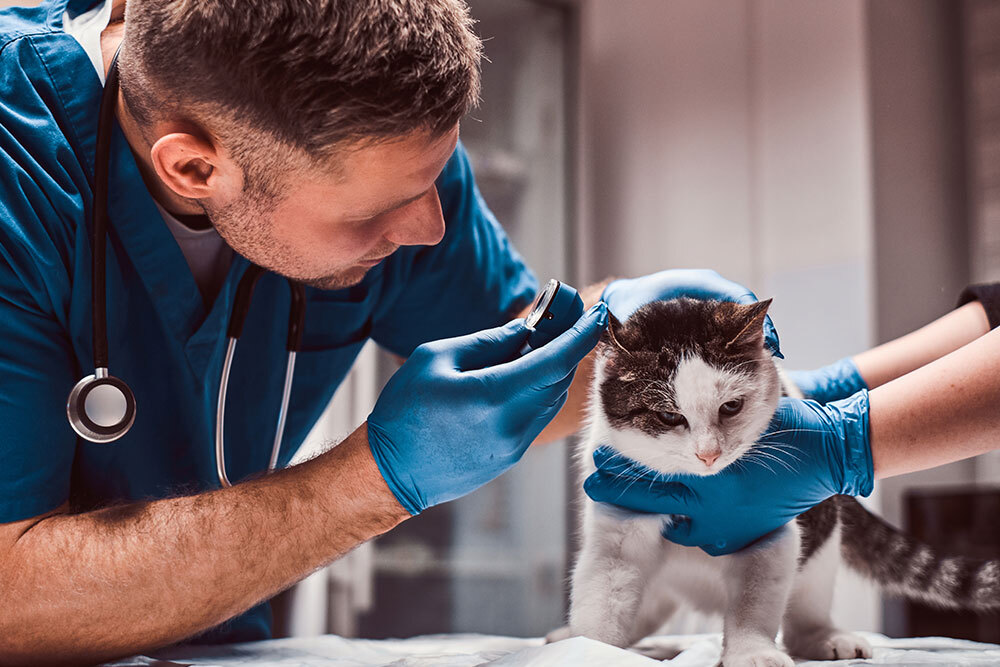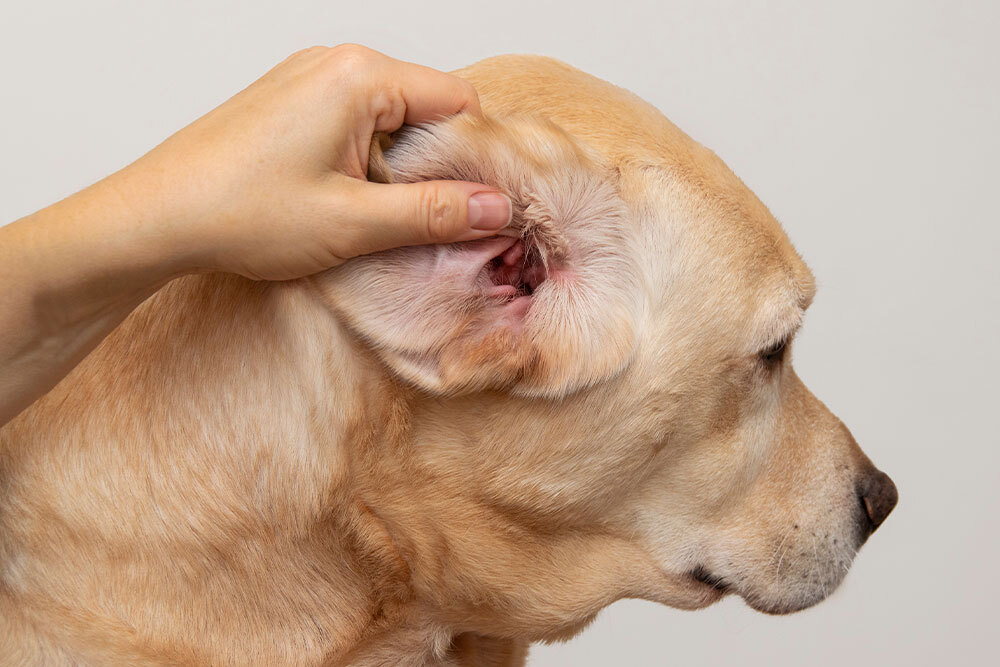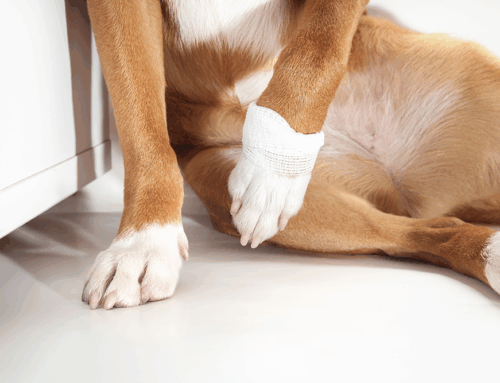Ear Infections in Pets: Causes, Symptoms, and Treatment
Ear infections are one of the most common reasons pets visit the veterinarian. Dogs and cats are prone to developing ear infections due to bacteria, yeast, allergies, or ear mites, and without prompt treatment, these infections can lead to chronic pain, hearing loss, or deeper infections affecting balance.
At Bayview Animal Hospital in St. Petersburg, FL, we provide comprehensive diagnosis and treatment for ear infections to ensure your pet finds relief and long-term protection from future infections.
Learn more about our veterinary services: Bayview Animal Hospital Services
Common Causes of Ear Infections in Pets
Allergies and Ear Infections
Allergies are a leading cause of chronic ear infections in pets. Dogs and cats with environmental or food allergies often experience inflammation in the ear canal, which can lead to secondary infections.
More on pet allergies:
- Dog Allergies: Symptoms & Treatment – AKC
- Allergy Tips for Small Animals – Purdue Veterinary Hospital
Moisture and Bacterial Growth
Dogs that swim frequently or have damp ears after baths are at higher risk of developing ear infections due to bacterial and yeast overgrowth.
Breeds prone to moisture-related infections:
- Labrador Retrievers
- Golden Retrievers
- Cocker Spaniels
Ear Mites in Cats and Dogs
Ear mites are tiny parasites that infest the ear canals, causing extreme itching and irritation, particularly in kittens and outdoor cats.
Symptoms of ear mites:
- Excessive scratching of the ears
- Dark debris resembling coffee grounds in the ear canal
- Strong odor from the ears
Foreign Objects or Excessive Ear Wax
Grass awns, dirt, or excessive wax buildup can block airflow in the ear canal, creating an environment where bacteria and yeast thrive.
Breed-Specific Factors
Certain breeds are naturally more susceptible to ear infections due to ear shape, hair growth, or genetic predisposition:
- Floppy-eared breeds (Cocker Spaniels, Basset Hounds) trap moisture and bacteria, leading to recurrent infections.
- Hairy-eared breeds (Poodles, Schnauzers) accumulate wax and debris, which may require regular cleaning.
Symptoms of Ear Infections in Pets
Mild to Moderate Symptoms
- Frequent head shaking and ear scratching
- Red, swollen ear canal
- Unpleasant odor from the ears
- Brown, yellow, or pus-like discharge
Severe Symptoms That Require Urgent Care
- Pain when touching the ear
- Loss of balance or head tilt (sign of a deeper infection)
- Hearing loss
- Bleeding from the ear canal
Suspect an ear infection? Schedule an exam today: Book Appointment
Diagnosing Ear Infections in Pets
Veterinary Examination
- Visual inspection to check for redness, swelling, or discharge.
- Ear swab cytology to identify bacteria, yeast, or mites.
- Otoscopic exam to assess the deeper ear canal and eardrum condition.
Additional Testing for Chronic Cases
- Culture and sensitivity testing for persistent infections.
- Allergy testing to identify underlying causes.
- Imaging (X-rays, CT scans) if a middle or inner ear infection is suspected.
Treatment Options for Ear Infections
Medications for Bacterial and Yeast Infections
- Topical antibiotic and antifungal ear drops to treat infections.
- Oral medications for severe or deep infections.
- Anti-inflammatory steroids to reduce pain and swelling.
Treatment for Ear Mites
- Prescription ear mite treatments effectively eliminate mites.
- All pets in the household should be treated to prevent reinfection.
Deep Cleaning and Flushing
- Performed by a veterinarian under sedation if needed to remove debris, wax, and pus.
- Essential for severe infections to improve medication absorption.
Allergy Management for Recurring Ear Infections
- Dietary changes for food allergies (novel protein or hydrolyzed diets).
- Antihistamines or prescription allergy medications for environmental allergies.
- Routine ear cleaning to prevent flare-ups.
Preventing Ear Infections in Pets
Routine Ear Cleaning
- Use vet-approved ear cleansers (avoid alcohol or hydrogen peroxide).
- Clean ears weekly or after swimming.
- Gently wipe the outer ear with a cotton pad—never insert cotton swabs into the ear canal.
Keep Ears Dry
- Dry ears thoroughly after baths, swimming, or rain exposure.
- Use ear-drying solutions for pets prone to moisture buildup.
Regular Veterinary Checkups
- Annual exams help catch early signs of ear infections.
- Pets with chronic infections may need ear exams every 6 months.
When to Seek Veterinary Care
Immediate veterinary attention is needed if:
- Your pet is in visible pain when you touch their ears.
- They have discharge, bleeding, or a foul smell from the ears.
- You notice head tilting, loss of balance, or hearing issues.

Why Choose Bayview Animal Hospital for Ear Infection Treatment?
- Experienced veterinarians trained in diagnosing and treating chronic and acute ear infections.
- Advanced diagnostic tools, including cytology and culture testing, for accurate treatment plans.
- Personalized allergy and prevention strategies to reduce recurrence.
- Gentle, stress-free care for pets experiencing ear pain and sensitivity.







Leave A Comment